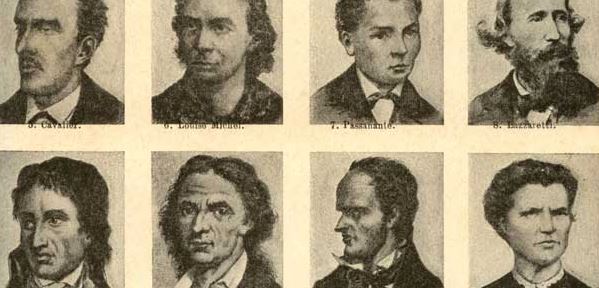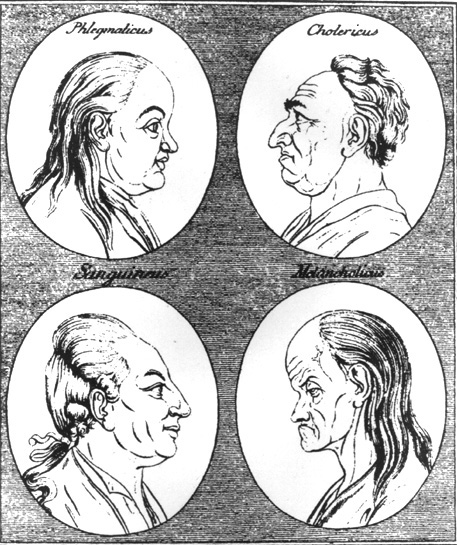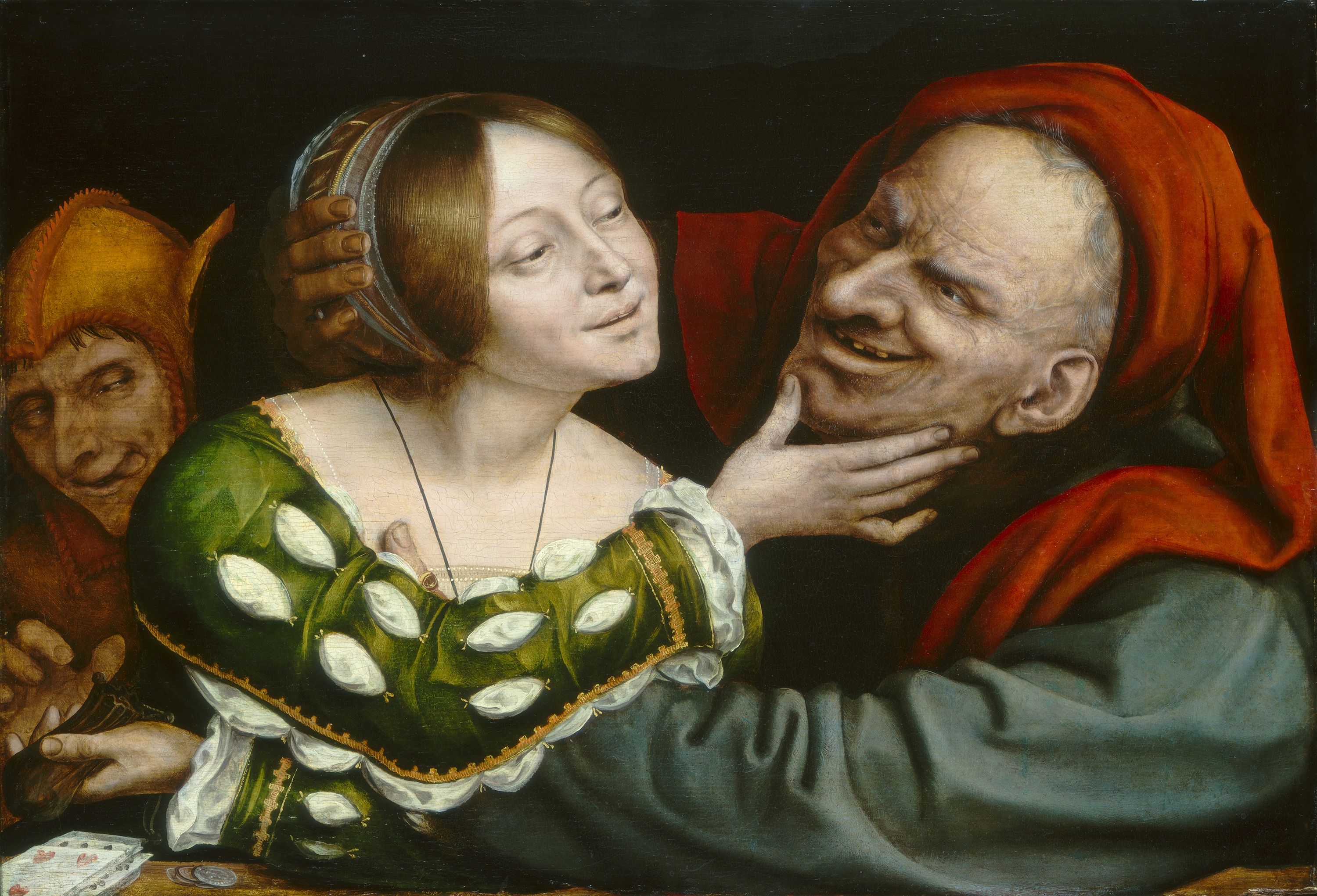The Good, the Bad and the Ugly. On looks and personality in medieval thought
In Renaissance Italy, “beautiful people” were believed to be good, whereas “ugly people” were generally bad. But what was the “logic” behind this reasoning?
After having studied the faces of thousands of convicts, the Italian criminologist Cesare Lombroso (1835-1909) was convinced that he had discovered a way to recognize “the born criminal”. According to him, the owners of facial features such as a broad jaw, deep-set eyes and a hawk nose were much more likely to have the savage nature and capricious character that caused people to commit crimes. Although Lombroso’s theories have now since long been discredited, physiognomy, or the assessment of character from someone’s outward appearance, was a “science” which for a large proportion of human history held much authority. Even now, aspects of this way of thinking give birth to common prejudice (red-haired women typecast as passionate, blonde women as unintelligent). However, while most modern people are no longer convinced of the scientific truth of these ideas, in Renaissance Italy, the connection between good looks and good morals was supported by an entire framework of scientific thought.

“Criminal faces”. Plate from Cesare Lombroso’s Homme criminel (c. 1880). Source: Wikimedia Commons.
The human body and the world
The medieval and early modern conviction that your appearance says something about your character, can be traced back to classical sources such as the medical tradition from Hippocrates to Galen and late antique astrology. According to the premodern worldview, the world is made out of four contraries (hot, cold, moist and dry) which combine to form the four elements fire (hot and dry), water (cold and moist), air (hot and moist) and earth (cold and dry). The human body is related to the world just like a microcosm is related to a macrocosm, and therefore the human body itself is made of these elements and contraries as well. In human bodies, the elements and contraries combine to form four different bodily fluids (“humors”): yellow bile, black bile, blood and phlegm, and the balance of these humors determines your health as well as your complexion.
Since in medieval and early modern thought, “complexion” included both the character and the appearance of a person, a predominant amount of a particular humor was believed to determine both your looks and your character. There are four classical complexions: choleric people are, for instance, tall and lean, have a good memory but are very vindictive; melancholic people are thin, sentimental and typical scholars; sanguine people are red cheeked (because of all the blood), merry and lustful, but easily angered as well; while those of a phlegmatic complexion are pale and fat, lazy and not very smart. Some of these terms are still in common use: in novels, passionate personages are often called “sanguine”, while in Dutch, the word “zwartgallig” (litt. “black-bilish”) is a common term for melancholy.

Phlegmatic, choleric, sanguine and melancholic complexions. Woodcut from Johann Kaspar Lavater’s Physiognomische Fragmente (1775-1778). Source: Wikimedia Commons.
From the end of the 15th century, physiognomy became even more popular than it had been before, especially in Italy, where numerous medieval and classical texts were reprinted and new works were created by authors such as Bartolomeo Cocles and Giovanni Battista della Porta. Influences from this tradition can be found in literary texts as well. A good example is an anecdote by Matteo Bandello (1480-1562). Bandello was a member of the clergy as well as a famous writer of funny (and often rather scandalous) novels, which he collected in his Novelle. In one of these stories, the Italian king Frederick II talks about the ways in which physiognomists can tell a person’s character from the way he looks:
The king then said that if a man has stiff hair, he is daring; if he has a broad fleshy breast, he is lusty; and if he has the opposite of these, he is timid. If he has a very round face, he is foolish and shameless, if he has a very red color, like overripe mulberries, he is a great deceiver, and if he has joined eyebrows, he is a traitor.
Most of these statements have a “logical” explanation – as long as you at first accept the basic precepts of humoral theory. Soft hair, for instance, is found in people of phlegmatic and therefore timid complexion, whereas thick and rough hair is found in sanguine people, who are fiery and courageous. When the king continues his comparisons, saying that men with curly hair are either musicians or people of wicked and little stable humor, a captain at his court senses an opportunity. Pointing at another courtier with curly hair, he shouts that “Vito over there cannot sing a note!”, which Bandello considered a very witty response, because following the king’s reasoning everyone would now have to believe that, because of his curly hair, this Vito was a very wicked creature.

Quentin Massys, Ill-Matched Lovers (c. 1520-1525). Source: Wikimedia Commons.
Beauty and the beast
Although these characteristics could become ridiculous in their specificity, as Bandello showed with his curly-haired-men-anecdote, there was another more general conviction that connected outward appearance and character. The idea that beauty on the outside is a sign of beauty on the inside, was a reoccurring theme in Renaissance literature.
The Florentine preacher Girolamo Savonarola (1452-1498) warned his female audience not to take pride in their appearance. “Don’t boast, women, about your beauty. You are ugly, all of you. Do you want to see the beauty of the soul? Take a look at a devout person, either man or woman, and when they pray, you will see the beauty of God light up in their face and an angelical countenance.” Bodily beauty, according to Savonarola, is the result of the beauty and purity of the soul. This can for instance be seen from the fact that once the soul leaves the body, a once beautiful face becomes ugly. Moreover, “if you take two women of equal beauty, the one remaining pure and well-behaved, the other becoming a prostitute, you will see that the first will shine with an almost angelical beauty, whereas the other, although handsome, can’t be compared with the first one”. Likewise, if a very beautiful woman becomes possessed by a demon, she immediately loses her beauty.
The same principle can be found in The book of the courtier by Baldassare Castiglione (1478-1529). In this book, Castiglione sketches the profile of a perfect man of the court, prescribing everything he needs to know, from how to dress, to what jokes to tell and how to behave around women. As outward appearance in general is of great importance to the courtier, it is perhaps no surprise to find the theory about beauty and character here as well. Pietro Bembo, a philosopher in real life who figures as one of the characters in Castiglione’s book, states that for the most part, ugly people are evil, and the beautiful are good. The ‘logical’ explanation for this, is that the supernatural beauty of the soul makes whatever it touches beautiful. A beautiful appearance is therefore a sign of inner goodness, a token by which we can recognize the beauty of the soul, just as on a tree the beauty of the blossom is a sign of the beauty of the fruit.

Disney’s Beauty and the Beast. Detail of a photo by Melissa Hillier: https://www.flickr.com/photos/77423179@N02/32421227101.
Nature vs. nurture
“Logical" reasoning” aside, how do philosophers explain the fact that in reality, beautiful people can be bad people as well? Signor Morello, one of the other characters in The book of the courtier who is unconvinced of the whole theory, comments that he has seen “many beautiful women who were evil, cruel and spiteful, and this seems to be nearly always the case, since beauty makes them proud, and pride makes them cruel”. Pietro Bembo defends himself using a kind of “nature vs. nurture” argument. Since beautiful women are by nature good people, when they do become “bad” (which in 16th century Italy would be synonymous with “unchaste”), this has more to do with circumstances than with their true nature:
To be sure, I shall not deny that we can also find in the world beautiful women who are unchaste (…) But sometimes evil training, the continual urgings of their lovers, gifts, poverty, hope, deceits, fear and a thousand other causes can defeat the steadfastness even of good and beautiful women, and for this and other reasons handsome men can also become wicked.
A similar kind of argument can be found in a different text, the Dialogue on the infinity of love, written by the famous courtesan Tullia d’Aragona (c. 1510-1556). In this treatise, based on Platonic thought, she argues with a scholar, Benedetto Varchi, about the nature of love. Often during these discussions, Tullia objects to Varchi’s philosophical reasoning, because it is much too abstract and goes against everything that she has learned by experience. When Varchi says that the good and the beautiful are the same, Tullia immediately remarks that she has met many handsome people who were not virtuous at all. Varchi however says that this is not “because of their nature but by accident”, as a result of the bad example of their father, teacher or friends: “bad company will teach you bad ways”. He goes even further than Castiglione, saying that when beautiful people become bad people, they are even more wicked and malicious than others:
This is the way nature works. If something is better and perfect in its natural essence, it becomes worse and more flawed whenever it spoils, corrupts, and loses its essential purity. (…) As the saying goes, it is the sweetest wine that produces the strongest vinegar.
Although it is possible to meet someone who is beautiful but has an awful character, as a rule of thumb, Renaissance philosophy taught that beautiful people were good, whereas ugly people were generally bad. Although this might seem short-sighted, it would be unfair to judge 16th century Italians as backwards. Even in our modern society, people often still judge a book by its cover, even if this happens unconsciously: studies have shown that “attractive” people are generally perceived as more sociable, successful, capable, and trustworthy.
© Marlisa den Hartog and Leiden Medievalists Blog, 2019. Unauthorised use and/or duplication of this material without express and written permission from this site’s author and/or owner is strictly prohibited. Excerpts and links may be used, provided that full and clear credit is given to Marlisa den Hartog and Leiden Medievalists Blog with appropriate and specific direction to the original content.


